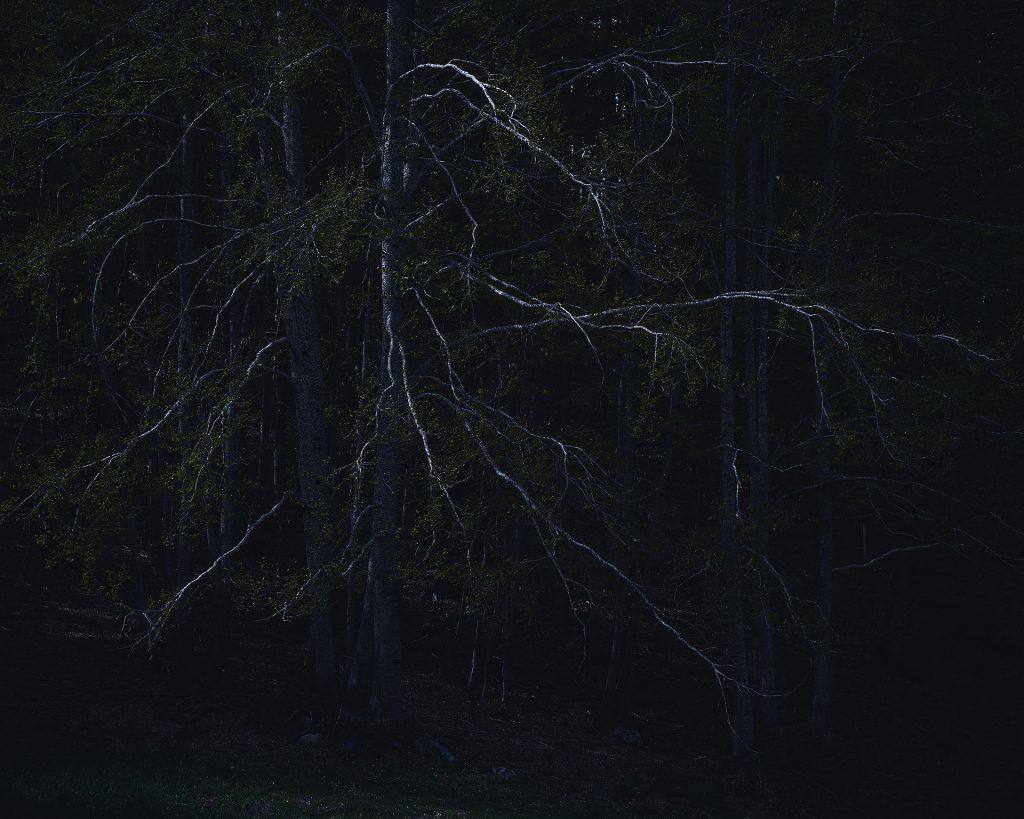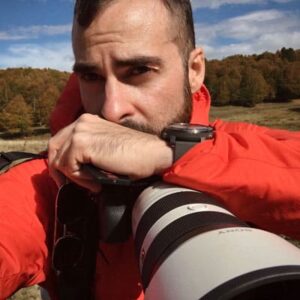I want to thank the editors at NPN for giving me a chance to speak about the power of photography in telling our mood, our daily lives, our personality, and our psyche. Photography is a powerful means of expression, not just documentary, but especially emotional. I hope to change some perceptions of our dark sides in this article.
You can use photography to tell the dark side of our soul, the darkness in which our psyche, as can happen in life, remains trapped. Psychology has always fascinated me, and in the last two years, inspired by some psychological text that I have had the opportunity to go into (I am a lover of Carl Gustav Jung), I tried to find a way to transfer my insights, into the photographic field, narrating the darkness of our unconscious life. I also had the chance to transform events that are part of a person’s life into dark photography. Images that can be disturbing and fascinating at the same time.

If we talk about darkness, by association, our mind will annihilate the light, but darkness can also be found inside it, for this reason, I do not limit my photographic outputs to the conditions of diffuse light (of a cloudy day), much less at the golden hour (probably the hours I photograph the least); all this would be to the detriment of my ideas, not finding the right stimulus and canceling the surprise effect (fundamental for me). This is the case with the first photograph:
I find myself in a valley at an altitude of 1600 meters, a less populated area of the Sila National Park (my favorite photographic place, as well as my second home), where typical expanses of the Apennine mountain landscape alternate with dense beechwoods. The sun beat down strongly that day, the contrasts were sharp and the light hard, conditions that are not ideal to take up the nuances of color and the tonal passages of a landscape. But, the hard light which filtered through the foliage of the beeches, highlighted the shapes of the twisted branches, which wind between their foliage in search of help and hope, as happens in the darkness of the subconscious. Between the shadows and the soul tormented communicating with our conscious part. I used a low key to reduce the reading to the minimum and indispensable, making the landscape behind the branches almost imperceptible and leaving the rest to the observer’s imagination.

I love to exploit strong anchoring elements, especially in chaotic compositions, even more, if these are opposed, to the other elements of the landscape, in colors and shapes. In this image I find myself in a forest of chestnut trees; it is the end of March, a period in which the trees, without leaves, await the ideal conditions of light and temperature to acclimatize and sprout; but some lonely trees anticipated the season, turning green. With my telephoto lens, I isolated the scene, taking advantage of the green tree, like a soul full of hope, trying to bring order to its inner chaos.

Some mood disorders, create a strong, as well as uncomfortable, sense of instability, imbalance, altering the perception, which will become muffled, unclear. Anxiety and fear create this unpleasant feeling, which reflects on our daily life.
I chose this image to describe this.
On a winter excursion, equipped with snowshoes, through a valley, surrounded on the left by conifers, on the right by broad-leaved trees. It was a sunny day, although, thanks to meteorological applications, I am quite informed about the worsening of the weather conditions. About one hour from the beginning of my excursion, a sudden snowstorm strikes down, making my travel difficult, with some complications to photograph, but the snowy landscape in front of my eyes is sublime, mystical, with gloomy and fascinating traits. In this image I have exploited the foliage of the trees and the undergrowth, isolating, thanks to a focal average (and open diaphragm) two trunks of firs, in the total absence of direct light, ravished by darkness, in a just pronounced fog and thin and heavy snowfall; the mood that I have been looking for so much in these two years to recreate that disturbing and uncomfortable muffled perception caused by anxiety.

I love the Renaissance artistic representations present in the anti-witchcraft manuals of 1400, which depict esoteric, seductive, orgiastic, spectral scenes.
In this image, two pairs of poplars (which could represent troubled souls) seem to communicate with each other in an esoteric ritual. Psychology is still a taboo for many, especially in southern Italy, where I live. A person with anxiety and depression disorders, nowadays so common today, until a short time ago was labeled in an almost grotesque and esoteric way.

The wild rose is a very common plant in the Sila National Park. In this scene, a pile of dry rose branches creates a tangle of weaves, from which texture starts. I find in this image a metaphorical meaning, where the tangle can represent an undefined mass, which traps the soul in the darkness of the mind.

During an autumn excursion, I was attracted by the intense light emanating from the foliage of some beech trees. The sun was perfectly behind them, and illuminated the foliage against the light, simultaneously outlining the trunks of the trees (in turn, illuminated by the reflected light of the golden lawn). The intense light illuminated the heart of the forest with heat, releasing strength. The central tree seems to want to exit the frame, almost annoyed by the light, but is blocked by the branch of another tree. There are those who flee from the light to take refuge in the darkness, but those who have inner strength can avoid escape, continuing their journey towards the light.

At the end of each tunnel, there is always a light, and the hope to reach it must never fail. That is why armed with willpower, we must fight the society that labels us, our demons, reaching the divine light at the end of the tunnel; essential for feeding and purifying our soul, essential for living and surviving. We must take inspiration from the trees, and from their constant search for light.
Photography, in our case of landscape, is a very important means of expression, which allows us not only to tell the evolution of the earth and its ecosystem, but also to better express our ideas, our habits, our life, downloading every kind of tension, projecting our inner part in the form of images; a real journey that will keep track of our existence to future generations.






